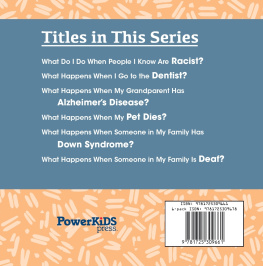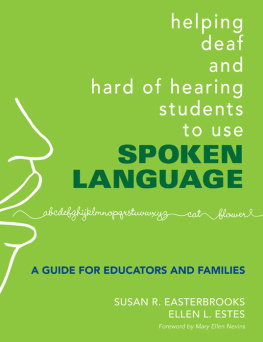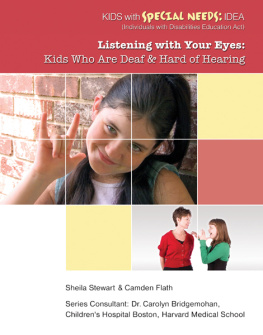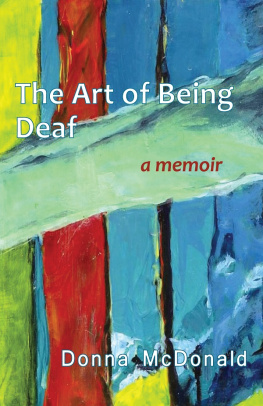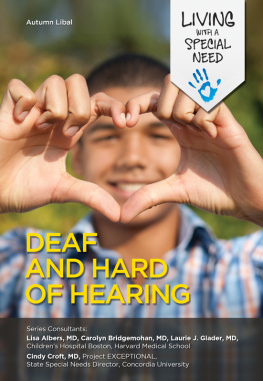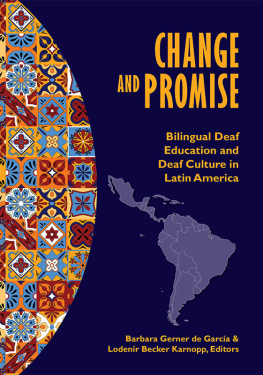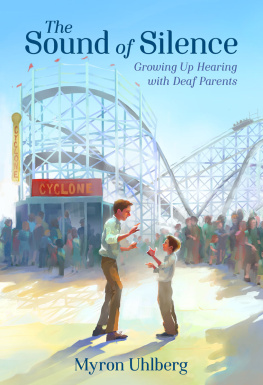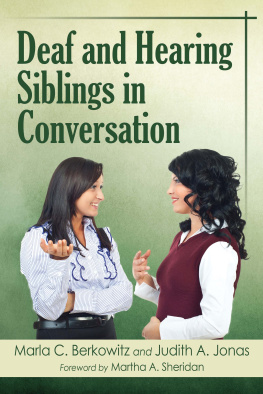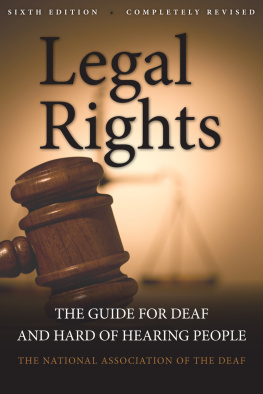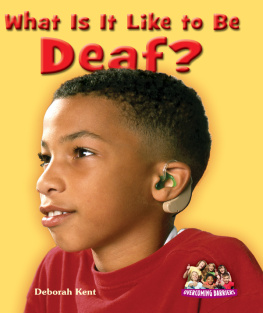Turn on the Words!
Turn on the Words!
Deaf Audiences, Captions, and the
Long Struggle for Access
Harry G. Lang
Gallaudet University Press
Washington, DC
Gallaudet University Press
gupress.gallaudet.edu
Gallaudet University Press is located on the
traditional territories of Nacotchtank and Piscataway.
2021 by Gallaudet University
All rights reserved. Published 2021
Printed in the United States of America
ISBN 9781944838843 (paperback)
ISBN 978194483885-0 (ebook)
Library of Congress Cataloging-in-Publication Data
Names: Lang, Harry G., author.
Title: Turn on the words! : deaf audiences, captions, and the long struggle for access / Harry G. Lang.
Description: Washington, DC: Gallaudet University Press, [2021]. | Includes bibliographical references and index. | Summary: The evolution of Captioned Films for the Deaf (CFD) program is a primary focus of the book. Topics such as movie theater captioning and closed captioned television are also featured, as well as the role played by deaf community activists to improve access via captions Provided by publisher.
Identifiers: LCCN 2021005292 (print) | LCCN 2021005293 (ebook) | ISBN 9781944838843 (paperback) | ISBN 9781944838850 (ebook)
Subjects: LCSH: Motion picturesTitling. | Television programsTitling. | Closed captioning. | National Association of the Deaf. Described and Captioned Media Project.History.
Classification: LCC TR886.9 L34 2021 (print) | LCC TR886.9 (ebook) | DDC 777/.55dc23
LC record available at https://lccn.loc.gov/2021005292
LC ebook record available at https://lccn.loc.gov/2021005293
This paper meets the requirements of ANSI/NISO Z39.481992 (Permanence of Paper).
Image on top of cover: Photograph by Sally Taylor, courtesy of the Paul and Sally Taylor collection at Southwest Museum of Engineering, Communications and Computation (Ed Sharpe, director). www.smecc.org. Lower cover picture. Gallaudet College students watching the captioned film Cyrano de Bergerac, in 1961. Image courtesy of Gallaudet University Archives.
Cover design by Eric C. Wilder.
Cover description: Top of the cover is a photo of people marching down the street during a CBS protest in Rochester, NY. Below the photo is the title and subtitle: Turn on the Words! Deaf Audiences, Captions, and the Long Struggle for Access. Below the title is a photo of students sitting in rows in a classroom with their backs to the camera. They are watching a captioned film on a projector screen. Superimposed on the classroom image is the authors name: Harry G. Lang
While the author and editors have made every effort to provide accurate internet addresses and other contact information at the time of publication, neither the publisher nor the author assume any responsibility for errors or changes that occur after publication. Further, the publisher does not have any control over and does not assume any responsibility for third-party websites or their content.
CONTENTS
by Ernest E. Hairston
by Jason Stark
FOREWORD
Ernest E. Hairston
Why should a book on captioned films for deaf people be written? Why is it important that the story be told? Captioned movies shown in theaters nationwide and captioned television programs are now taken for granted. Originally, captioned films were produced in order that deaf and hard of hearing viewers could understand what was spoken on the screen instead of guessing or imagining what was being said. In fact, captions have always benefited a larger and varied audience, especially people learning English as a second language and patrons of noisy places such as bars and restaurants. But captions have empowered deaf and hard of hearing people. Access has led to increased success. And as Harry Lang has shown in his history of the TTY (A Phone of Our Own), many of the advances in both telephone technology and captioned films involved deaf people. As described in both books, deaf people should take pride in the roles they played in these technological advances.
Having lived through much of the early stages of the evolution of both telephony and captioning, I gave little thought to how important history is to education until I read Harrys books. New generations of deaf people have available a variety of captioning technology and other telecommunication devices available to them in their youth. Reading about how hard the previous generations worked to gain access to leisure time entertainment may provide them with the motivation to continue the legacy. Those who know this history may be inspired to enrich it further.
For older deaf people like me, who learned to enjoy and depend on captioned movies and captioned television the hard way, one small breakthrough at a time, we know well what it was like. But there are surprises for us, too, in this book. Many readers may not realize the extent to which the captioning movement spawned the rapid rise of visual media as valuable resources in the classroom. Even the deaf and hearing pioneers we personally knew were often too modest to share the many challenges they facedthe resistance of Hollywood studios to support open captions in theaters, the attitudes of people about captions being distracting, and the months-long wait for a captioned film to become available are just a few examples.
What began as a small program called the Captioned Films for the Deaf to distribute 16 mm films to schools and the Deaf community has blossomed into a modern multimedia resource program that enriches educational environments, utilizing online streaming of films, YouTube, Facebook, and a website accessible anytime and anywhere.
Harry Lang has documented many aspects of Deaf history and Deaf studies in his various writings, and I am pleased that he has undertaken this challenge of describing the complex history of captioning as it pertains to films and television.
After more than forty years of federal service, all with the Department of Education (formerly the Office of Education within the Department of Health, Education, and Welfare), I often reminisce about my own role in implementing policies that helped bring access to myself and thousands of other deaf and hard of hearing people. I often have wondered if a book documenting the evolution of captioning and the roles of key players would ever be written while memory is fresh and readily available. Even though I managed the Captioned Media Program, as well as personnel preparation (teacher training) projects, research grants, and the National Theatre of the Deaf grant, I seldom thought about how the captioned films story was unfolding. This is it!
This book is thoroughly researched and will be a welcome addition to the growing collection of histories of the roles deaf and hearing people have shared together in applying technological breakthroughs to improve the quality of our lives.
PREFACE
Where would deaf adults and deaf kids be today if captioning had not been developed for films? Few would argue with the belief that the impact of captioning has been dramatic. The power of words through captions has been very evident to me as I experienced this access over the last few decades. Captions have provided me with knowledge, amusement, and satisfaction in my life. As an educator, I have seen firsthand how they have empowered my students by providing both primary and vicarious learning experiences.
The story of how captioning came into the lives of deaf and hard of hearing people has not been told in any detail, and I welcomed the opportunity to document it. When Gilbert Gil L. Delgado first shared with me his ideas for the book, I was satisfied with the primary focus on the government-sponsored program Captioned Films for the Deaf (CFD), which launched captions for media. Such a book appeared to me, at first, as one both concise and focused. It would be about a small program sponsored by the federal government to help bring access to deaf people through the technology of captioning. Never did I think when I began this book that the story behind this small program was so far-reaching and impactful.


